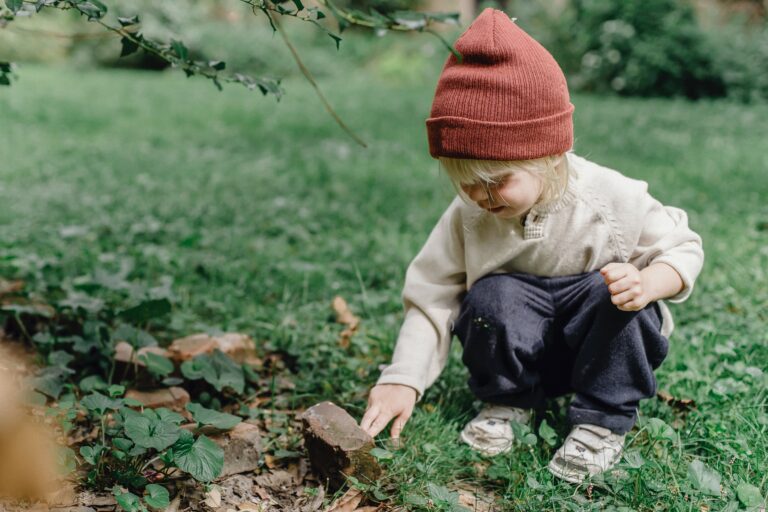Turn to Nature to Support Mental Health in Children
May is Mental Health Awareness Month, when Americans are urged to recognize the toll of mental illness, fight stigma and advocate for better support for the millions of people affected. One increasingly important area of focus: children.
The Centers for Disease Control estimates that nearly one in five children have a mental, emotional or behavioral disorder. That figure is based on pre-COVID research, and many experts believe the actual figure today to be much higher, since the American Psychological Association, among other sources, reports that rates of depression and anxiety have spiked in the last three years.

Mental illness among children is caused by a bewildering array of factors, but no matter the exact situation, parents and other caregivers can adopt one simple strategy to buttress the mental health of the children and adolescents they love. They can foster a connection to nature.
Author Richard Louv introduced the term “nature deficit disorder” in 2005 to call attention to the fact that children spend less time outdoors than ever before, negatively affecting their well-being. The term is not an officially recognized diagnosis, of course, but it highlights a real problem. The New York Times reported in an article titled “‘Nature Deficit Disorder’ Is Really a Thing”:

Research has shown access to green space is linked to a child’s well-being. For example, adding greenery to school play yards has been shown to increase prosocial behavior in kids. They help, cooperate, comfort and share more; the loss of access to this greenery has the opposite effect. A 2013 study found that even viewing nature scenes can reduce stress and regulate heart rates.
The Garden’s Children and Family Education team encourages families to make nature time a priority. “Giving kids a chance to get outside, feel the grass and breathe the air helps them find their place in the world, especially when they are allowed to explore on their own terms,” says Anna Sorelle, innovative learning manager for special programs.
“Connecting with nature helps all kind of things, including mental fatigue and body awareness, and it encourages a life-long appreciation of the natural world,” says Sorelle.
Sorelle had several suggestions for caregivers seeking ways to encourage time outdoors.
Techniques to Engage with Nature
One is a simple technique called “5-4-3-2-1.” “This is used by therapists to help calm anxiety and ground people in the moment,” says Sorelle.
Individuals are asked to name:
- Five things they can see.
- Four things they can feel.
- Three things they can hear.
- Two things they can smell
- One thing they can taste.
“This exercise helps you shift your focus to your surroundings in the present moment and away from what is causing you to feel anxious,” says the Mayo Clinic in an article on the technique.
Another technique is called INIWIRMO, pronounced “any-worm-o.” This is a mnemonic to remember three simple statements:
- I notice …
- I wonder …
- It reminds me of …
“We ask children to focus on something–a leaf, a rock, whatever they’ve found. Then they tell us something they notice about the object, something they wonder about the object, and something that the object reminds them of,” says Sorelle. “It’s a way to help kids look beyond the obvious and really engage with what they’ve found.”

Activities in Nature
Families can take their exploration a step further with simple activities.
One favorite of Sorelle’s is to make rubbings of the shapes and textures discovered outside. Ask children to collect leaves, twigs and pieces of bark. Place plain white copy paper over the shapes and rub over them gently with a crayon to transfer the texture and outline of the object.
Sorelle also likes making nature bracelets. “Loosely wrap a strip of duct tape or packing tape around the child’s wrist sticky-side out. Then as you walk through the Garden, have the child stick whatever they discover onto their bracelet,” says Sorelle. “It’s a very centering activity, and kids love it.”
Books about Nature
Finally, Sorelle had two book recommendations. For children ages three to seven, she suggested Outside In by Deborah Underwood. “Outside In reminds emerging readers of the ways nature creates and touches our lives in homes, apartments, and cars,” says the publisher’s description. “Rhythmic, powerful language shows us how our world is made and the many ways outside comes in to help and heal us, and reminds us that we are all part of a much greater universe.”
For children ages eight to twelve, Sorelle suggests Finding Calm in Nature: A Guide for Mindful Kids by Jennifer Grant. This book is centered around the idea that nature can help children untangle difficult feelings, according to the publisher’s description. “From dandelions to spider webs, children will uncover the lessons nature teaches about embracing a growth mindset, the benefits of living in community, and the transformative power of noticing the beauty around them,” says the description.
To help children connect to nature is to give them a life-long gift of appreciation for the natural world while helping them cope with feelings that may threaten to overwhelm them. And it has one added benefit for their caregivers: Time in nature is good for the mental health of adults, too.
This article originally appeared in the Fort Worth Botanic Garden’s newsletter of May 5 and is shared with permission.


 Sign in
Sign in

